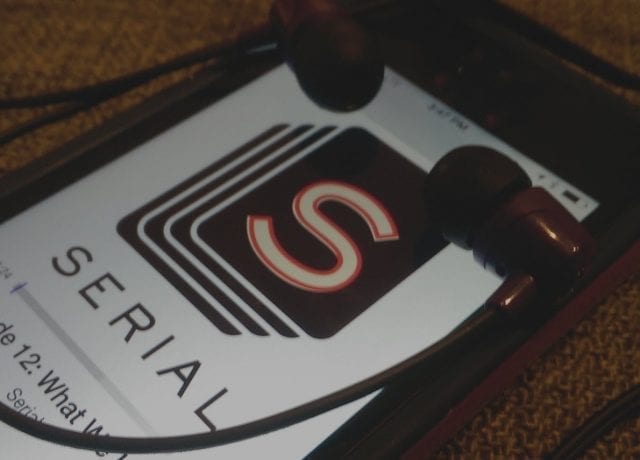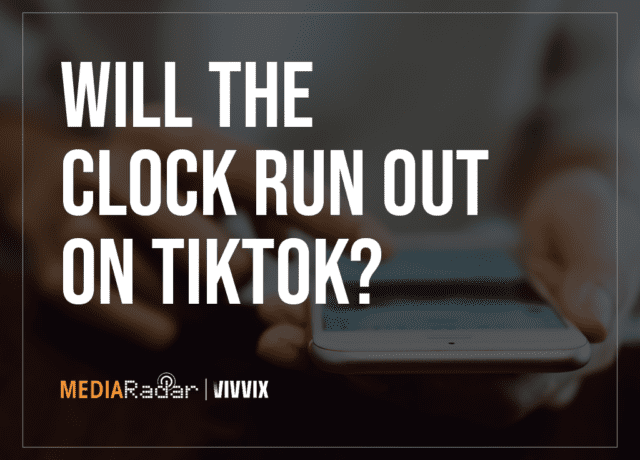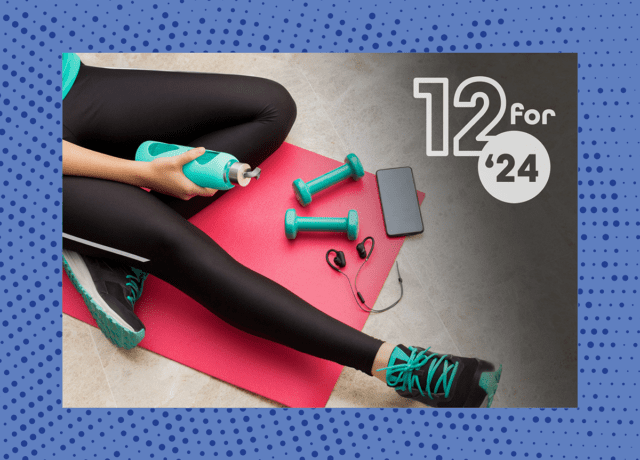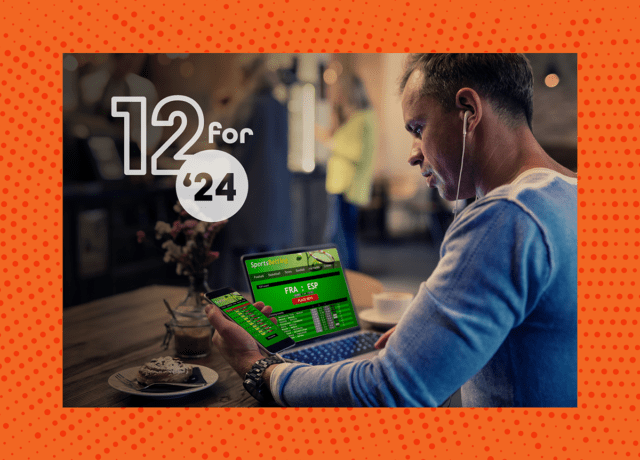In a 2021 study, 79% of respondents were aware of podcasts, while more than 82mm people listened to them—a number expected to surpass 100mm in 2024.
The growth of podcasts means that publishers and advertisers should pay close attention to the expanding world and its advertising (and revenue-generating) implications.
More and more content producers have adopted the format, and like any other form of content, advertisers are following; podcast advertising in the U.S. drove almost $1.5b in revenue as of 2021, representing a 72% increase from 2020.
Why?
For publishers, podcasts offer a new way to reach and grow their audience while giving them new ad inventory to offer brands.
For advertisers, podcast ad space is a place to engage with consumers in a new way – a way that seems to be gaining popularity.
As podcast advertising grows, the market is responding. Most notably, programmatic podcast advertising is gaining steam to help advertisers drive performance and efficiency in this relatively new ecosystem. That said, ad buyers are hesitant to buy via programmatic means for various reasons, including host-read ads remaining powerful and the need to vet content before the ad goes live.
Despite the growing pains, podcast advertising is here to stay—its direct-response powers are too much to ignore.

Moving Consumers to Action with Direct Response Podcast Ads
Direct response advertising has been around for quite a while in the form of coupons, sales, promotional codes, call-now’s, and more.
The idea of the form is to make consumers move immediately from an advertisement to a purchasing action. The consumer is making a buying decision based directly on the ad they were exposed to – hence the name.
Podcasts, however, have added a new layer of digital interaction for direct response advertising. Content consumers engage with podcasts in ways unlike almost any other form of content, and that has brought a new depth to what brands can achieve with direct-response ads.
For example, a listener could hear an ad about a new type of mushroom coffee and immediately buy it with the corresponding discount code (these are almost always part of the ads). The fundamentals of direct response advertising are there, but podcast’s version has something others don’t: authenticity.
Not only are direct-response podcast ads delivered in a way that encourages a purchase, but they’re done so authentically—people generally take the host’s recommendations more seriously. They do this for the same reason influencer marketing is so popular; people trust people more than brands.
So, that got us thinking… What else makes podcast direct response advertising more desirable for brands than other forms of direct response?
Why Brands Love Podcasts for Direct Response Advertising
The growing addressable audience remains a central factor in brands’ fondness of podcast advertising, but there’s more to it. A level deeper, the liking resides with podcasts’ targeting, engagement, listener loyalty, and attribution.
1. Targeting
As the podcast landscape continues to expand, more genres of podcasts have become available. There is also less censorship and more freedom when creating podcasts compared to radio and other forms of audio content.
All of this, paired with the do-it-yourself nature of the industry, means that a ton of podcasts are being created in many genres. According to the Podcast Index, there are currently almost 4mm podcasts.
From an advertiser’s perspective, more genres mean that they can reach more hyper-targeted audiences.
Different shows offer audiences of various sizes, age demographics, etc. Therefore, advertisers can measure the likeliness of a direct response by the type of audience that consumes the podcast at hand.
For example, a B2B advertiser can target B2B podcasts, like The Advanced Selling Podcast, and make the ad buy confidently, knowing that those who will hear it are likely directly aligned with their ideal customer profile (ICP).
Advertisers can also vet the episode their ads will run during, an extra layer of confidence that programmatic podcast ads can’t offer yet.
2. Engagement
Podcast listeners tend to be very engaged and focused on the episode they choose to listen to. In fact, that matter of choice is a factor in its own right.
Listeners must find the podcast episode they want to listen to, leading them to be more patient with the content. Compared to radio, for example, there’s much less randomness regarding what podcast listeners consume.
Jason Cox, the CTO of Panoply, stated that listeners to their podcasts get through 80-90% of the content they choose to listen to.
The nature of podcasts leads listeners to do less skipping around and more genuine listening, obviously presenting a terrific environment for direct response advertising, as more engaged listeners are much more likely to act immediately.
According to Edison Research, 54% of podcast listeners say they are more likely to consider the brands they hear advertised on podcasts.
The nature of podcast ads drives engagement as well. Why? Because most of them are read by the host.
In fact, 63% of podcasts are host read, while almost half of podcasts had the majority (at least 8 out of 10) of their ads read by the host.
A study from Nielsen found that host-read podcast ads were “significantly more likely to be described by respondents as authentic and believable, and less likely to be felt as forced.”
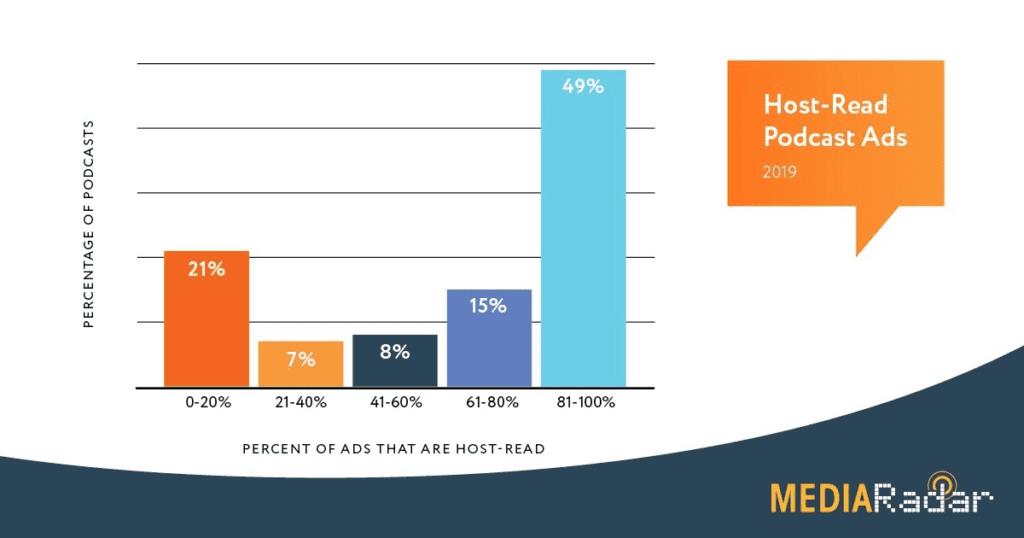
3. Listener Loyalty
Podcasts are like music in that listeners can connect to the host and the content (in the case of narrative-based podcasts). As listeners become more deeply connected with podcasts, they’ll build better associations with the brands that advertise on that podcast.
Many podcasts have very loyal audiences, as well.
They have listeners who will tune in attentively to every episode. Direct-response advertisements often remain the same for multiple episodes, so even if a listener is not drawn to action the first time they hear an ad, they will be later.
Consider this: Let’s say someone is listening to their favorite comedian’s podcast. If that comedian endorses the same brand for multiple episodes, pushing one promo code, there’s a high chance that the listener will at least research the promotion to see if they’re genuinely interested.
In this case, the listener has a pre-built loyalty toward their favorite comedian and, therefore, will be more willing to consider the brands that that comedian is endorsing, thinking, “If [Enter favorite comedian’s name] likes MediaRadar, then maybe I should, too.”
4. Attribution
Attribution is the arch-nemesis of advertisers. It always has been and always will be. The bane of advertisers’ existence is rearing its head more than ever as Google prepares to sunset third-party cookies, making it unprecedently difficult for advertisers to get a clear view of campaign impact.
Podcast ads come with their own attribution challenges—a 2021 survey found that attribution was the most commonly cited challenge of podcast advertising—but they have an edge that other ad formats don’t: promo codes.
Most podcast direct response ads include some version of a promo code.
It’s simple on the consumer side and gives advertisers a direct link to attribution. When consumers act on a direct response ad, a measurable interaction occurs at the point of purchase – “Use the promo code MediaRadar2023 at checkout,” for example.
When someone uses MediaRadar2022 at checkout, it’s a data point for advertisers of a successful direct response advertisement.
To expand and further hone direct advertising efforts, brands can use the data they gain from conversions to fuel their later podcast campaigns.
Advertisers and Direct Response Podcast Ads: A Perfect Marriage
In 2022, 82% of marketers said they planned to continue investing the same amount or more in podcasts or other audio content.
That’s easy to understand, considering targeting, engagement, and attribution prowess. Also, direct-response podcast ads give brands immediate access to loyal audiences.
Those reasons alone are enough to keep pushing ad dollars into the podcast world. Still, other outside forces are in play, including the demise of third-party cookies and advertisers’ desire to deliver ads in the most authentic way possible.
For more insights, sign up for MediaRadar’s blog here.
